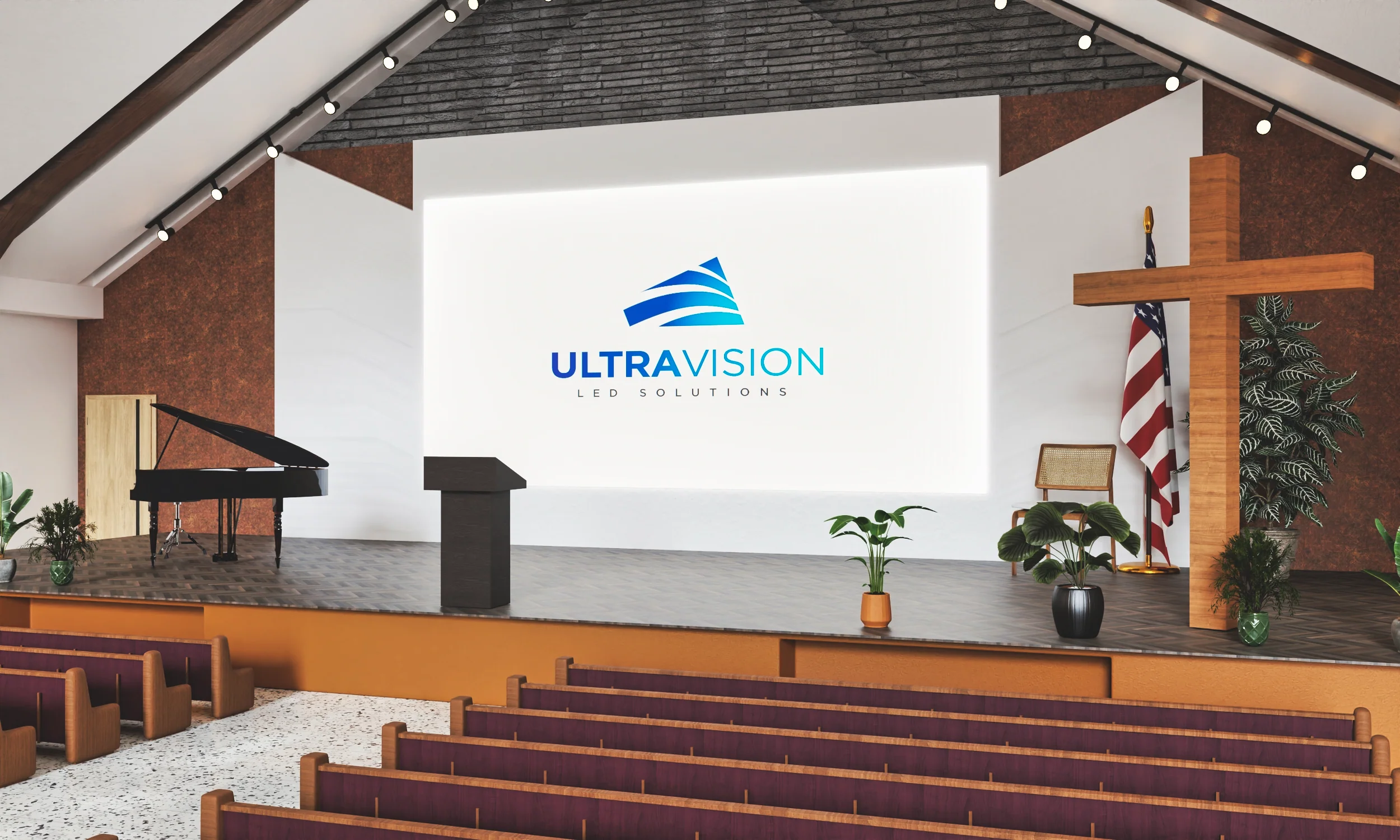Table of Contents
Key Takeaways
- Digital signage can revolutionize the way churches communicate with their congregations.
- Understanding the benefits and potential pitfalls can help churches utilize this technology effectively.
Introduction to Digital Signage

Digital signage has significantly risen in the past decade, transforming how businesses engage with customers. This transformation is particularly evident in churches, where digital signage has the potential to modernize the dissemination of information, fostering dynamic and engaging connections with members. In a visually oriented society, digital signage meets the demand for effective communication by delivering dynamic visuals and pertinent messages.
Incorporating this technology involves more than just installing screens in your place of worship—it means incorporating a tool that has the potential to enhance the bond among church members. Leaders can utilize digital screens to communicate announcements, hymn lyrics, and other church-related information to keep the congregation informed and engaged. The following parts will explore the numerous advantages and provide practical advice for maximizing the use of digital signage.
Benefits of Digital Signage in Churches
Implementing digital signage for churches has numerous benefits. First, it enhances communication through vivid visuals and timely updates. According to a study on digital signage benefits, organizations that use digital signage see up to a 47% increase in audience engagement.
Enhanced communication is a crucial advantage. Digital signage enables churches to provide immediate updates and quickly distribute important messages to members, such as schedule modifications or details on upcoming activities. It guarantees that important information is noticed. Moreover, digital signage can improve the aesthetic appeal of sermons and announcements, increasing audience engagement. Top-notch visuals and videos are more effective at grabbing attention than traditional printed announcements, assisting in keeping the congregation engaged.
- Improved Communication: Digital signage allows real-time updates and instantly shares essential announcements.
- Visual Appeal: High-quality graphics and videos can make sermons and announcements more engaging.
- Flexibility: Content can be easily updated or customized to suit different events and services.
In addition, digital signage offers adaptability that surpasses traditional approaches. This means that content can be tailored and regularly updated to cater to specific events and services, resulting in a more personalized and pertinent experience for the congregation. Whether it involves showcasing hymn lyrics during a service or presenting images from a recent mission trip, digital signage can be modified to meet a wide range of needs.
Practical Implementation Tips

Successfully integrating digital signage in a church atmosphere requires strategic planning.
- Define Clear Objectives: Know what you aim to achieve, such as better communication or enhanced worship experiences. Clear goals will guide the selection of hardware, software, and content strategies.
- Choose the Right Hardware: When choosing screens, select reliable and suitable for your budget and specific requirements. Consider factors such as screen size, resolution, and placement to guarantee the highest level of visibility and effectiveness.
- Content is King: Leverage diverse visuals, videos, and text to curate impactful and immersive content for your congregation. Infuse sermon quotes, Bible verses, and inspirational messages to construct a vibrant and enthralling experience that resonates deeply with your audience.
- Regular Updates: To keep the audience engaged, it’s crucial to refresh the content and update it regularly. Plan frequent updates to remove outdated information and incorporate new visuals and messages. By continuously updating the content, you can ensure that the congregation remains engaged and returns to the screens for the most recent and relevant information.
Another practical tip is to use existing volunteers or hire someone with experience in digital media. This will help create and manage the content more efficiently. Leveraging your congregation’s technical skills can make the transition smoother and more cost-effective.
Additionally, having a clear plan for content management is crucial. Determine who will create, update, and oversee the content displayed on the digital signs. Clear roles and responsibilities will ensure that digital signage is consistently used to its full potential.
Future Trends
With technological advancements, the future of digital signage in churches looks promising. We can expect more interactive features and integration with other digital platforms, allowing congregations to engage in new and innovative ways. Features like touch screens for interactive sermons and real-time polls can enrich the worship experience markedly.
The integration of mobile technology could also play a significant role. Congregants could receive updates, participate in live polls, or submit prayer requests through smartphones, linking seamlessly with digital signage systems. This interconnected approach would provide a holistic and engaging experience for all attendees.
Furthermore, the data collected from these interactive elements can offer a valuable understanding of the congregation’s preferences, enabling churches to customize their services more effectively. By examining which announcements attract the highest levels of engagement and identifying the times when congregation members are most actively involved, churches can refine their strategies for creating future content.
Also Read: The Invaluable Advantages of System Integration Testing (SIT)
Final Thought
Digital signage offers many benefits for modern churches, from improved communication to enriched worship experiences. While there are challenges, the right approach and strategic planning can lead to successful implementation, driving engagement and fostering a more robust connection within the congregation. When utilized effectively, this technology can transform how churches interact with their members, offering a more engaging and inclusive environment.
Digital signage is valuable for churches looking to enhance their worship experience with more engagement and vibrancy. By comprehending the advantages, tackling the obstacles, and implementing strategic plans, churches can guarantee that their message is heard and embraced by all congregation members.




